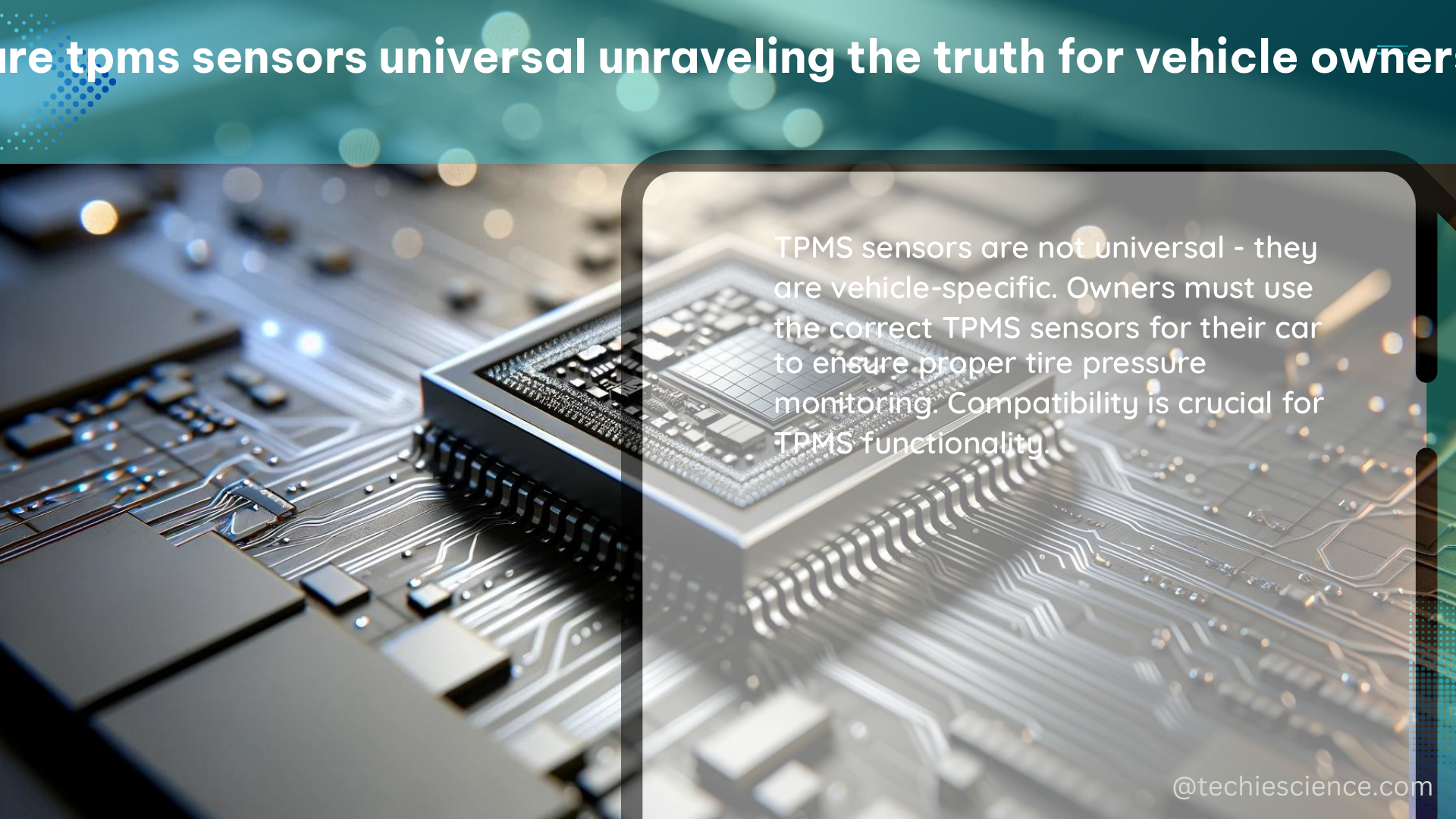Are TPMS (Tire Pressure Monitoring System) sensors universal? This is a question that many vehicle owners grapple with, as the universality of these sensors can have a significant impact on their maintenance, repair, and replacement costs. In this comprehensive guide, we’ll delve into the technical specifications, features, and benefits of TPMS sensors, providing you with a detailed understanding of their universality and how it affects vehicle owners.
Understanding TPMS Sensors
TPMS sensors are designed to perform three primary functions: 1) maintain tire pressure, 2) measure air pressure, and 3) transmit data via RF (Radio Frequency) to the vehicle’s onboard computer system. These sensors play a crucial role in ensuring optimal tire performance, fuel efficiency, and safety.
Types of TPMS Sensors
There are three main types of TPMS sensors:
- Direct Replacement Sensors: These sensors are designed to match the original equipment (OE) sensors in terms of frequency strength and durability.
- Multi-protocol Sensors: These sensors can communicate with multiple vehicle systems, offering greater compatibility.
- Programmable Sensors: These sensors can be customized to specific vehicle make, model, and year requirements, providing a higher level of flexibility.
Programmable TPMS Sensors

Programmable TPMS sensors have emerged as a popular choice among vehicle owners and technicians due to their high level of customization and compatibility.
Bartec RiteSensor®
The Bartec RiteSensor® is an example of a leading aftermarket programmable TPMS sensor. It offers 98% vehicle coverage and can be easily programmed using Bartec TPMS tools.
Key Features of the Bartec RiteSensor®:
– 98% vehicle coverage
– Easy programming using Bartec TPMS tools
– Matches or exceeds OEM sensor performance in frequency strength and durability
Autel 1-Sensor
The Autel 1-Sensor is another example of a programmable universal TPMS sensor. It combines both 315MHz and 433MHz frequencies into a single sensor, providing 99% vehicle coverage and the ability to be quickly updated using an Autel wireless programming tool.
Key Features of the Autel 1-Sensor:
– 99% vehicle coverage
– Combines 315MHz and 433MHz frequencies
– Matches or exceeds OEM sensor performance in frequency strength and durability
– Quick programming using Autel wireless tools
TPMS Diagnostic and Programming Tools
To ensure the proper installation and programming of TPMS sensors, specialized diagnostic and programming tools are essential.
Autel MaxiTPMS TS900
The Autel MaxiTPMS TS900 is a three-in-one wireless tablet that offers TPMS diagnostics, service, and advanced features, such as Active Tests and Special Functions. This tool can activate, read, and relearn all known TPMS sensors, including Tesla OE sensors, and program the Autel 1-Sensor to replace 99% of the TPMS sensors on the road today.
Key Features of the Autel MaxiTPMS TS900:
– Wireless TPMS diagnostics and service
– Activates, reads, and relearns all known TPMS sensors
– Programs the Autel 1-Sensor to replace 99% of TPMS sensors
– Offers advanced features like Active Tests and Special Functions
Factors to Consider
When evaluating the universality of TPMS sensors, it’s important to consider the following factors:
- Vehicle Coverage: The percentage of vehicles a TPMS sensor can be programmed to work with.
- Frequency Strength: The ability of the sensor to transmit data at the required frequency (315MHz or 433MHz).
- Durability: The sensor’s ability to withstand the harsh conditions of the tire environment and maintain its performance over time.
By understanding these factors, vehicle owners can make informed decisions when selecting and installing TPMS sensors, ensuring their vehicles’ safety and performance.
Conclusion
While there are universal TPMS sensors available, it’s crucial to ensure that they are compatible with the specific make, model, and year of your vehicle. Programmable sensors, such as the Bartec RiteSensor® and the Autel 1-Sensor, offer a high level of vehicle coverage and customization, making them a popular choice among vehicle owners and technicians.
By leveraging the right TPMS sensors and diagnostic tools, you can maintain the optimal tire pressure, improve fuel efficiency, and enhance the overall safety of your vehicle. Remember to always consult with a qualified technician or refer to your vehicle’s manufacturer recommendations when it comes to TPMS sensor selection and installation.
References:
– Bartec TPMS Sensors
– Autel Complete TPMS Solutions
– TPMS Data and Manuals

The lambdageeks.com Core SME Team is a group of experienced subject matter experts from diverse scientific and technical fields including Physics, Chemistry, Technology,Electronics & Electrical Engineering, Automotive, Mechanical Engineering. Our team collaborates to create high-quality, well-researched articles on a wide range of science and technology topics for the lambdageeks.com website.
All Our Senior SME are having more than 7 Years of experience in the respective fields . They are either Working Industry Professionals or assocaited With different Universities. Refer Our Authors Page to get to know About our Core SMEs.